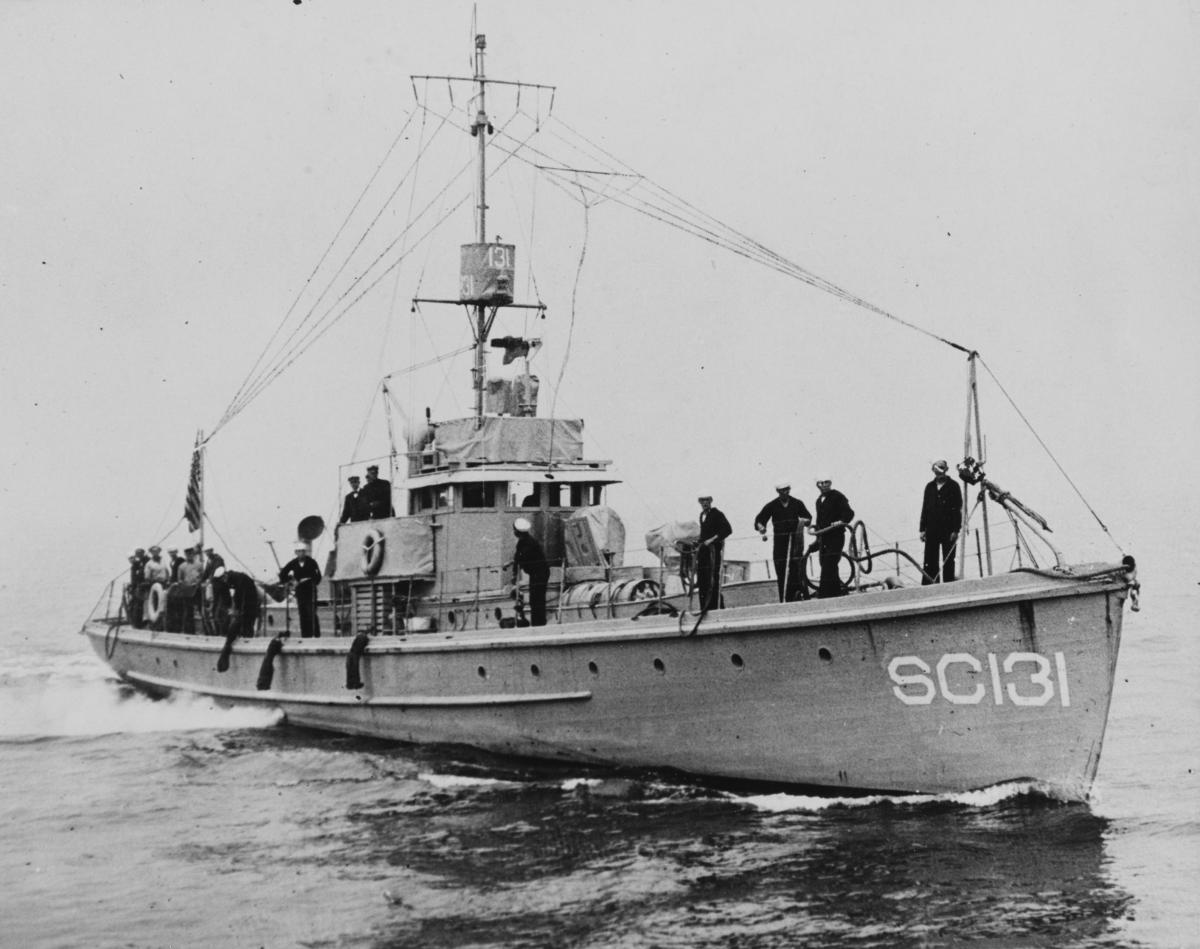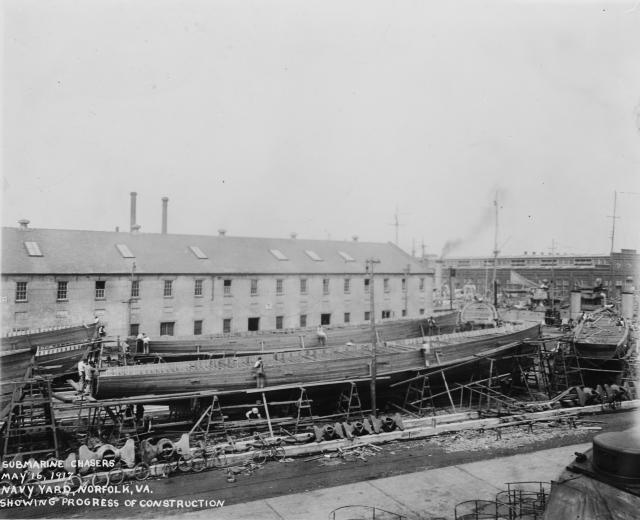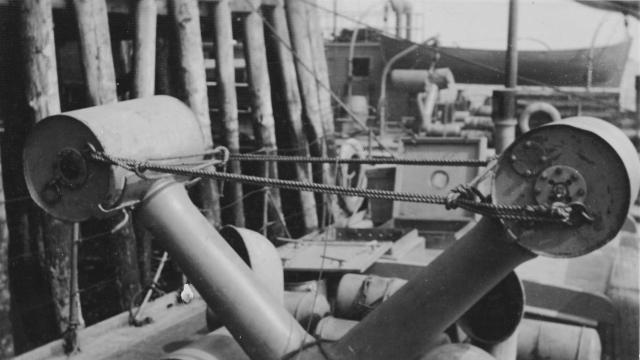
U.S. Navy SC-1–class submarine chasers performed significant services that became an integral part of the Allied effort to win World War I war at sea. They did this by their teamwork incessantly patrolling the eastern European and western United States littorals. At the end of the war, Secretary of the Navy Josephus Daniels reported that 355 wooden submarine chasers had been constructed to implement submarine defensives measures. The 110-foot ships had a crew of 2 officers and 20 men, one 3-inch gun mount, two .30-caliber machine guns, and one y-gun to project depth charges. With three 220-horsepower gasoline engines attached to three individual shafts, the craft moved at a theoretical maximum speed of 18 knots. The service of these small unheralded escorts began just a few months after the United States entered the war in April 1917.
Prior to the construction of sub chasers, President Woodrow Wilson, Secretary Daniels, the General Board of the Navy, and both houses of Congress focused on building a cadre of surface and subsurface warships. When a German submarine sank the British ocean liner Lusitania, which resulted in the death of 128 Americans, Wilson directed preparations to upgrade the Navy’s order of battle. In December 1915, Secretary Daniels submitted a five-year plan to Congress that included the construction of battleships, battle cruisers, and a large assortment of smaller surface and submarine combatants. The list did not include patrol craft or sub chasers. Highly respected Admiral George Dewey, head of the Navy General Board, wrote in an addendum to Daniels’ report that fast battle cruisers were the most effective submarine killers.

As the war in Europe continued unabated, Congress spent the next nine months debating the Navy’s recommendations. Meanwhile the Battle of Jutland essentially ended the threat of the German battleship fleet, leaving it mostly sequestered in port for the remainder of the war. While Germany shifted its maritime focus to increased undersea warfare, in August 1916 the U.S. Congress continued to concentrate on surface warfare by approving appropriations for the Navy to construct 156 warships over a three-year period to begin in fiscal year 1917.
After Germany upped the threat by declaring unrestricted submarine warfare in February 1917, the outgoing 64th Congress authorized a $115 million Naval Emergency Fund for additional small combatants to include sub chasers. Shortly thereafter, on 6 April, the United States declared war against Germany because of its announcement to conduct unrestricted submarine warfare against all Allied shipping. At the same time, the British Navy finally convinced itself that a convoy of supply ships escorted by combatants would in fact reduce the current unsustainable shipping losses. Within a few months the U.S. Navy began joint convoy ventures with the British that finally managed to successfully defend the seas from submarine attacks.
The Navy designated the large cadre of its newly minted SC-1–class submarine chasers by number rather than by name. They were not primary participants in the ocean convoy operations because of their limited range of around 1,000 miles. But within a few months, they not only patrolled western Atlantic ports, they managed to cross to Europe in their own convoy groups by conducting mid-ocean refueling. The crews were a selected mix of personnel. The ensign commanding officer was generally from a college and yachtsman background. Watermen and mechanics worked in the tight quarters. A supply of coal provided heat for the cook.

Working in teams, the chasers patrolled the Atlantic and Mediterranean port entry areas to force German submarines farther out to sea, thus reducing their intercept capabilities. To detect submarines, a sub-chaser crew manned deck-watch stations, operated a hull-mounted hydrophone, and monitored a copper wire trailing antenna. The small ships also performed escort duty and critical mine-clearing operations. Although the SC-1 sub chasers were credited with perhaps only one or two German submarine sinkings during the war, they carried out substantial services that contributed to the success of allied shipping and troop landings. After the war the Navy sold or scrapped the majority of its sub chasers and redesignated the remaining few as patrol craft.









